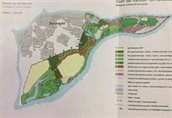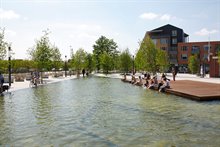Living labs
The Delta Plan on Spatial Adaptation supports Living Labs. Such support may involve the provision of expertise, publicity/communication support, the removal of obstacles in rules and regulations, and/or the provision of a grant.
Proposals for a spatial adaptation living lab could be submitted to the Delta Plan on Spatial Adaptation up to the end of 2016: postbusRA@minienm.nl.
The follow-up to the incentive programme is currently being set up. Whether and how this follow-up programme will continue to support such projects with effect from 2018 is yet to be determined.
What is a living lab?
A “living lab” is a research environment in which research and innovation are conducted concurrently according to the principle of co-creation and participatory design.
In an existing context, e.g., a neighbourhood, city, or region, public and private parties collaborate on spatial projects: from idea to design, from plan to implementation. The key concept is learning from one another. A living lab combines social and technological innovation into a single programme: new products are developed while simultaneously influencing the behaviour of end users, because they are directly involved and are provided with new opportunities.
Why is the Spatial Adaptation programme supporting Living Labs?
The Delta Decision on Spatial Adaptation sets out two goals: climate-proof development, construction, and management by 2020, and being climate-proof by 2050. The Delta Decision indicates that these goals can only be attained if all the stakeholders (public or private parties) contribute. Parties in the field perceive the step from an isolated project to a comprehensive, complex area as particularly difficult, as is the organisation among the parties.
Various locations in Europe and the Netherlands are already working with the Living Lab instrument. This instrument enables the upscaling of taskings in the larger, complex network of actors, issues, and taskings. With a view to the integrated and complex nature of climate adaptation, this instrument is now also employed in this field.
Spatial Adaptation Living Labs
In order to ensure the optimum performance of a Living Lab, a list of standards has been drawn up that living labs must meet in order to qualify for support.
Living lab Dordrecht


